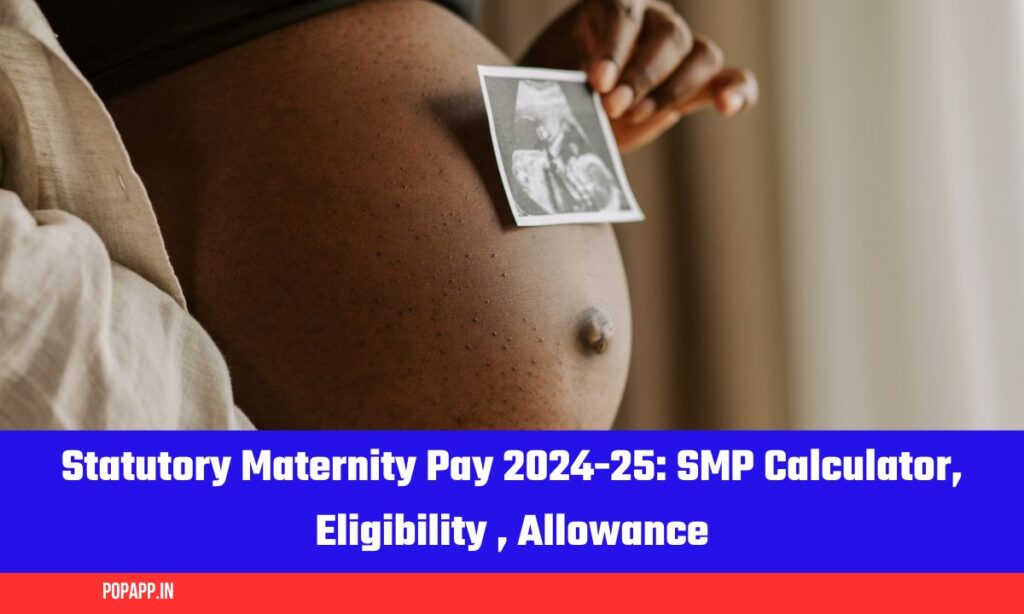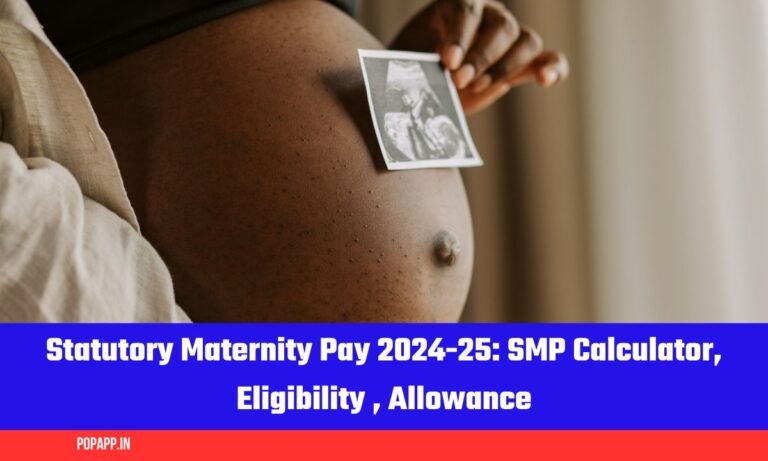The UK government gives a generous perk to pregnant employees taking maternity leave, in the form of Statutory Maternity Pay (SMP). It gives the eligible moms economic aid so they can take proper care at the time of delivery and in the early mom phase.
This is extremely important for expectant parents to understand. Whether you qualify for Statutory Maternity Pay,Maternity Allowance or Statutory Paternity Pay, getting to grips with what you’re entitled to and planning ahead can make your family finance work better when it needs to the most. This way, through right information and preparation you would also know that both yourself as well as your family members are in a place to be confident of making exact decisions next time when they welcome more additions in life.
– Initial 6 weeks: You will get pay equivalent to your previous average weekly earnings before tax for this period

– Weeks 7 to 39: Flat rate of £184.03 per week for SMP or 90% of your average weekly earnings, whichever is lower This setup guarantees mothers are given some financial assistance a substantial part of their maternal leave.
Page Contents
Statutory Maternity Pay Calculator How much will you be entitled to?
SMP is treated as taxable and you will be subject to National Insurance on your pay. These deductions will be made by your employer before you are paid any SMP. You can use different online tax calculators to get an idea of your actual take-home pay after these deductions have been applied. Such calculators take into account your individual tax code, other income sources and set of circumstances in order to give you a reliable idea as to the amount maternity pay will arrive at following after-tax deductions.
You can work out your exact SMP entitlement by using the [GOV.UK Maternity Pay Calculator] https://www.gov.uk/maternity-paternity-calculator This calculator enables you to enter details of your earnings, so that it will give a ballpark figure for what should be payable in respect of SMP. This calculator is a vital tool for maternity leave financial planning.
Statutory Maternity Pay for 2024/25
For tax year 2024/25, the rate of SMP has unchanged from previous years (6 weeks at 90% of earnings and £184.03 per week or 90% whatever is lower) for first six weeks and remaining amount to be paid as a weekly sum of either £184.03 in layman’s terms anything between this number your average weekly earning These are reviewed annually, usually in April and any changes made should be introduced with the new tax year.
Who qualifies for Statutory Maternity Pay?
SMP is funded by your employer and it’s commonly processed, along with your usual salary (taxed), either weekly or monthly. SMP is paid by the employers, and so must be correct and on time. These employers will be able to reclaim up to 100% of the SSP through their payroll system from HM Revenue and Customs (HMRC). This is to allow employers to claim reimbursement for any statutory maternity pay they can receive so that the cost of paying the employee while on leave will not be economically detrimental.
What is Maternity Allowance?
Maternity Allowance is another benefit for those not entitled to SMP. Especially suitable for female self-employed and those not working long enough with their employer to qualify for SMP Maternity allowance, a flat rate of £172.48 per week or 90% of your weekly earnings for up to 39 weeks This benefit is intended to cover your costs while you are on maternity leave and takes into account those who do not qualify for SMP.
Maternity Pay After 39 Weeks
followed by cessation of payment after 39 weeks for those who receive SMP. But you can still take the full 52 weeks and beyond on maternity leave. The final 13 weeks of this period is unpaid unless you receive an enhanced maternity pay package from your employer. This prolonged absence is unpaid — known as Additional Maternity Leave (AML) and it needs to provide for anything from 6 months onwards, depending on whether or not you elect to take a full year’s leave.
Eligibility for Statutory Maternity Pay and requirements
-You must have an unbroken period of employment in the same job continuing into the 15th week before your baby is due, called ‘qualifying week’.
-What you need to achieve is an average of £123 a week.
-You have to let your employer know you are pregnant and intend on taking maternity leave. This usually includes evidence of pregnancy like MAT B1 certificate from your doctor or midwife
How to Claim Maternity Allowance ?
Maternity Allowance — for those who do not meet the requirements of SMP; It gives financial help to ladies who are self employed working part time, or have not been employed long enough yet would still be a good mom. Maternity Allowance has a broader eligibility criteria that extends its availability to more types of mothers than SMP. There are payments made every four weeks and these are liable for tax so that you have a steady income while it is your turn to take maternity leave.
Financial Security for New Moms
Sense Of Maternity Pay : This Is How Financial Planning For Expecting Mo. It ensures you can take time out for your new baby and not be stressed about having no income coming in. If you qualify for SMP, Maternity Allowance or your employer is offering an enhanced maternity pay package then it’s important that you know all about what is and isn’t available to everyone in a similar situation. Also, be aware that some employers can afford to provide more generous maternity benefits than the basic legally-required minimum so it could pay off for you to have a quick look through your contract of employment or ask HR whether any other help might also be available.
Statutory Maternity Leave
In the UK, for example, mothers are entitled to take up to 52 weeks off through Statutory Maternity Leave ensuring they have plenty of time with their newborn and some breathing space post-child birth. The leave falls into two categories:
Average maternity leave: the initial 26 weeks, allows you to return to your job
– Additional Maternity Leave: The final 26 weeks, making the full year. You are eligible to take the whole 52 weeks but only 39 of these would be paid, and all other time taken after this point (the remaining13 weeks) may not have payment unless you agree with an employer on different terms.
People Also Ask
1. Statutory maternity paay is paid by the employer.
(SMP) is calculated and paid by an employer in the same way as regular wages. Most or all of the SMP payments are recoverable by employers from HMRC, meaning that providing this benefit should carry no financial costs for them.
2. What will statutory maternity pay be in 2024?
SMP is paid at 90% of your average weekly earnings in the first six weeks. Following this, however, it is paid at a standard rate of £184.03 per week or 90% of your average weekly earnings (whichever the smaller figure).
3. What to do once statutory maternity pay runs out?
You can take up to 52 weeks of maternity leave (after the first 39 weeks, your payments will stop) The remaining 13 weeks of leave will be unpaid unless your employer offers further SMP.




